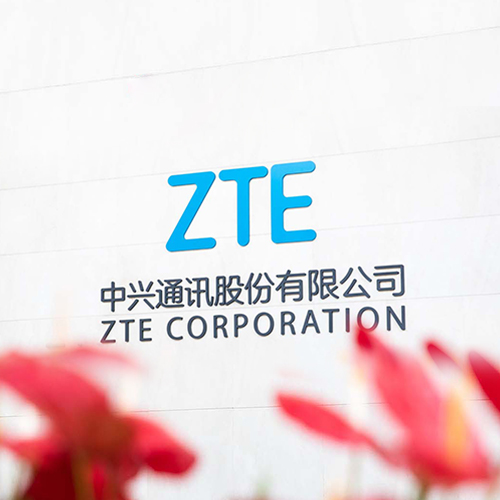12 July 2017, Shenzhen, China – ZTE Corporation (0763.HK / 000063.SZ), a major international provider of telecommunications, enterprise and consumer technology solutions for the Mobile Internet, today signed a declaration of cooperation with China Mobile on 5G network energy efficiency enhancement. Signed at a seminar on energy-saving technologies for 5G-oriented 3D-multiple-input, multiple-output (MIMO) and small cells, the agreement brings 5G network construction even closer to commercial use. China Mobile and important industry partners jointly conducted research on the new-generation low-power base station architecture, more efficient devices, and more effective energy-saving solutions to promote the implementation and commercial use of an energy-saving network architecture and technical solutions.
In order to meet the demands for network capacity, Massive MIMO base stations and the Ultra Dense Network (UDN) involving small cells will gradually become the trend and major architecture for future network construction. The rapid increase in services accelerates the increase in site sizes and rapid growth in energy consumption. To enhance the energy efficiency of future networks and build energy-efficient 5G networks, ZTE introduced the Access Cloud Engine (ACE) solution to implement efficient collaboration and networking of the 5G architecture.
The ACE solution is proposed by ZTE to meet the diversified demands for future services on the wireless access network. Based on unified hardware resource pools, this solution supports rapid deployment and provisioning of services with configurable and scalable capacity, reducing vertical isolation and enhancing resource utilisation efficiency. With a unified cloud architecture and shared infrastructure, the solution supports Mobile-Edge Computing (MEC) and flexible deployment of services. The Access Cloud Engine supports multi-site collaboration and multi-system integration, and can enable and disable wireless resources according to service distribution and change features, further reducing energy consumption in 5G networks.
In response to the promotion of energy-saving technologies, ZTE proposed a variety of energy-saving solutions for enhancing the overall efficiency of Massive MIMO base stations. The Massive MIMO technology poses higher requirements for hardware integration, and the highly integrated multi-channel chip is designed to deliver high energy efficiency of AAUs. ZTE solved the difficulties in Massive MIMO base stations by using self-developed vector processing chips. As of now, ZTE's Pre5G products and solutions utilising Massive MIMO and other key technologies have been deployed on more than 60 networks in over 40 countries, including China, Japan, Austria, Singapore, Spain, Malaysia, Thailand, and Indonesia.
To solve the traffic tide problems in multi-layer hybrid network coverage scenarios in the process of 5G network evolution, ZTE proposes an energy-saving control strategy based on service changes. This strategy reasonably controls the operation (for example, flexible shutdown and intelligent wake-up) of base stations based on service changes, involving intelligent energy-saving function clusters at the cell level, Discontinuous Transmission (DTX) detection for service guarantee, and small cell energy saving for interference control of UDN solutions.
Zhang Shizhuang, Planning Director of ZTE's TDD Product, said, "ZTE is willing to work with the partners in the industry chain to build more energy-efficient networks from the six perspectives of architecture evolution, networking, energy-saving technologies, application scenarios, new base stations, and chip evolution, laying a solid foundation for large-scale commercial use of 5G networks."
ZTE and China Mobile have established extensive partnerships in the 2G, 3G, and 4G fields, and will further intensify the partnerships in the 5G era. In 2016, ZTE worked with China Mobile on the 5G Joint Innovation Lab, and ZTE's Pre5G Massive MIMO became available in the existing networks of China Mobile. In February 2017, ZTE, Qualcomm, and China Mobile jointly announced that they planned to conduct interoperability tests based on 5G NR specifications, aiming for rapid sophistication of pre-commercial 5G NR products. ZTE and China Mobile worked together on the 5G field test in Guangzhou, and will carry out multi-site networking tests in the next phase, involving 5G wireless coverage, throughput, mobility, and latency.
By adopting the development of 5G as its core strategy, ZTE is expected to invest billions of dollars in 5G R&D before 2018, and boasts more than 2,000 5G R&D engineers worldwide. ZTE has always promoted 5G standards, and maintains an industry-leading role in 5G technology verification and product-based development. ZTE initiated and played a leading role in the NOMA project, a core project on 5G NR. During the second phase of China's 5G test, ZTE completed tests of its pre-commercial high-frequency and low-frequency 5G products as well as VCNs.
